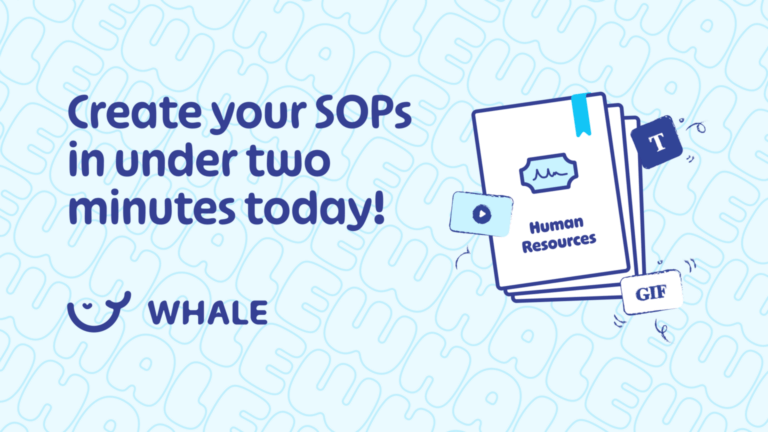Last year in our off-site connect, Team Whale got together to Spain. While we were there, we played the ‘Leaky Bucket’ game. Two teams each had to pass on a simple phrase in Spanish between 4 people that would hopefully come out ‘in tact’ by the end.
Well, you can imagine what happened.
Our Spanish went down the leaky bucket and came out as Gobbeldy Gook, which is another name for half English, half Flemish with a splash of Spanish.
Believe it or not, the same thing is happening in your business!
Introduction: to the Leaky Bucket Syndrome
In the fast-paced world of business, the flow of information is crucial for success. However, just like a leaky bucket, businesses often face the challenge of losing or misinterpreting valuable information when passed on from one person to another, leading to poor execution, costly mistakes, and missed opportunities.
Just working in the everyday zone of pressure requires all hands on deck; you can’t be having to deal with the additional pressure of knowledge loss.
In this blog post, we will delve into the concept of the “leaky bucket” in a business context, explore the consequences of information loss, and provide actionable strategies to prevent leakage and enhance overall business performance.
The Leaky Bucket Effect explained
Imagine a bucket with holes that let precious water leak out over time. Similarly, businesses can suffer from a leaky bucket effect, where vital information is lost, diluted, or misinterpreted as it passes through different layers of communication, departments, or teams. This leakage can occur at various stages, from strategy formulation to execution, and can have far-reaching implications for the organization.
In essence, it’s like having a bucket filled with holes of various sizes – some significant, some minor – through which knowledge and skills slowly trickle away. This gradual loss over time poses a growing challenge to staying competitive and pertinent as the world evolves.
Why does this matter?
Because the aim of any business is to build combined knowledge and abilities, using it as a solid base for growth. Company knowledge and information is the secret sauce of any business and one of the businesses most valuable assets.
Two ways companies lose knowledge
Information is often lost when one person leaves. But it can also be lost within an existing team, for instance, when a new person joins, and another team member tries to explain a concept but leaves out critical information.
So. do you have a slow leak in your business or a sudden loss of water? It actually doesn’t matter because both will drain your business of the skills and knowledge needed to sustain growth but it helps to identify how knowledge is lost.
When team members leave
Your top talent is a key asset in your business. When key team members leave the company, they take with them a wealth of expertise, knowledge, and know-how. This departure not only results in the direct loss of their specialized knowledge but also creates a gap that can be difficult to fill.
Colleagues and successors might struggle to replicate the same level of understanding, potentially leading to a decline in overall performance.
Ineffective Documentation and Sharing
60% of participants in a survey said it was difficult or almost impossible to get essential information from their colleagues. 😮
When crucial processes, practices, and insights are not properly documented or shared among team members, the organization faces significant risk. This gap in knowledge transfer can hinder the smooth continuity of operations and the foundation needed for scaling.
Without accurate and comprehensive documentation, essential information can remain siloed, making it harder for others to step in and sustain the same level of effectiveness.
The ensuing chaos of the Leaky Bucket
How bad can it be when knowledge is lost? Probably worse than you think!

Loss of essential information or misinformation can lead to;
- Poor Execution: When information is lost or misunderstood, executing projects, tasks, or initiatives becomes challenging. Employees may not have a clear understanding of their roles, leading to misaligned efforts and subpar results.
- Mistakes and Errors: Inaccurate information can lead to errors in decision-making, product development, or customer service. This can damage the company’s reputation and incur financial losses.
- Missed Opportunities: Critical insights and opportunities may be overlooked due to information leakage, preventing the business from capitalizing on emerging trends or market shifts.
- Communication Breakdown: Ineffective communication resulting from information loss can strain relationships among employees, teams, and even with customers and partners.
- Reduced Innovation: Information leakage can stifle creativity and innovation, as key ideas and insights get lost along the way.
These are just a few of the ways knowledge loss will impact your business.
And the MASSIVE cost of knowledge loss
The process of replacing a team member when they leave span eight to twelve weeks, at least!
Once a new team member joins you’re facing an additional period of four to eight weeks (at the very least!) before the new recruit is trained, confident, and contributing efficiently in their newfound role.
And that’s just the time component. If you think about the actual cost…well "replacing an individual employee can cost anywhere from one-half to two times their annual salary".
5 Ways to plug the holes and creating a cascading effect
1. Create a Centralized Knowledge Base
A centralized knowledge base serves as a vital tool in preventing company knowledge loss by providing a structured repository where information, processes, and insights can be documented, organized, and easily accessible to all team members.
Knowledge sharing in your business’s muscle for growth!
This comprehensive resource ensures that critical knowledge is captured, safeguarded, and shared across the organization, reducing the impact of employee departures and incomplete documentation.
Through regular contributions, updates, and collaboration, the knowledge base fosters a culture of continuous learning and knowledge sharing, effectively plugging the holes in the leaky bucket and enabling the company to retain, build upon, and leverage its collective expertise amidst evolving challenges.
2. Harness Continuous Learning
You and your teams are most likely updating the way you do things to improve and create more impact constantly. But the most essential aspect is to harness these learnings through updating documentation.
Incorporating a process of continuous improvement acts as a safeguard against company knowledge loss by fostering a culture of ongoing learning and refinement.
Through regular assessments, feedback loops, and iterative enhancements, teams can identify and address gaps in knowledge transfer, documentation, and practices. This proactive approach encourages employees to contribute their insights, share lessons learned, and collaboratively refine processes.
By adapting to new processes and leveraging collective expertise, and then reviewing processes, the organization reinforces its knowledge foundation, effectively sealing the leaks in the bucket. This ensures that valuable insights and capabilities are consistently retained, updated, and integrated into operations for long-term growth.
3. Utilize techngology to document in the flow of work
It’s one thing to have a process for updating SOPs and process documentation it’s not enough to simply store them on Google Drive.
You need to give your team members the power to update and share new information.
SOP Software like Whale can significantly mitigate company knowledge loss by offering a streamlined platform for documenting, organizing, and sharing critical information and practices. With Whale, it’s as simple as document, train, and measure.
Whale enables teams to create and maintain a centralized repository of knowledge, making it easily sharable with employees across the organization.
Through features such as collaborative editing, version control, and knowledge tracking, Whale facilitates continuous improvement by encouraging contributions, updates, and refinements to documentation.
The user-friendly interface promotes a culture of active knowledge sharing and ensures that valuable insights are captured, retained, and disseminated, thereby plugging the leaks in the bucket and fortifying the organization’s ability to adapt, innovate, and thrive in a changing environment.
4. Use process! And Systemize your business
We’ve said it before, and we’ll say it again. Systemize, systemize, systemize!
Systemizing business operations provides a structured framework for capturing, documenting, and replicating key activities. When processes are formalized and documented, essential information is codified and made accessible to all team members, reducing reliance on individual knowledge and ensuring consistency even when personnel changes occur. Like that one day that Sam doesn’t come to work, but you really needed to ask him something. Or worse, when your best team player decides to move to Australia with her dog.
This systematic approach enables efficient onboarding, smooth transitions, and continuous improvement as teams collaborate on refining and optimizing processes over time. By mitigating the risks associated with employee turnover and incomplete knowledge transfer, effective process systemization strengthens the organization’s foundation, preventing knowledge from seeping away.
This leaves the business with the foundations needed to thrive and innovate amid evolving challenges.
5. Collaborate across teams
Cross-functional team collaboration fosters a dynamic exchange of expertise, insights, and perspectives across different areas of the organization.
When teams from diverse functions collaborate, they naturally share their specialized knowledge, approaches, and best practices. This interdisciplinary interaction not only helps to bridge gaps in understanding but also ensures that valuable knowledge is disseminated and integrated throughout the company. As team members collaborate on projects, solve problems together, and engage in open discussions, the collective pool of knowledge expands and becomes more resilient.
This proactive sharing and cross-pollination of ideas effectively bolsters the organization’s ability to adapt, innovate, and succeed, thereby plugging the leaks in the bucket and ensuring that vital knowledge is preserved and leveraged for ongoing growth and competitiveness.
Bottom Line
Similar to the enduring memory of an elephant, which can span up to five decades, your company accumulates precious insights over its lifespan. This reservoir of wisdom holds significant worth for a business and is commonly referred to as organizational knowledge.
The best teams make sure to harness this collective wisdom and know that losing this essential asset can have devastating effects on a business. 😪
This includes missed opportunities, errors, and poor execution to name just a few.
Not to mention the cost involved of losing a team member in terms of time and money!
Recognizing and addressing the leaky bucket syndrome is crucial for maintaining a competitive edge and achieving success in today’s dynamic business landscape. By implementing strategies to prevent knowledge loss, businesses can unlock the next level of growth!










